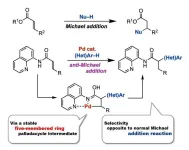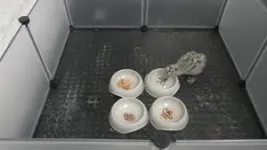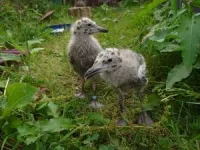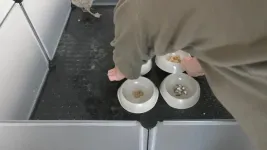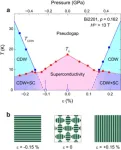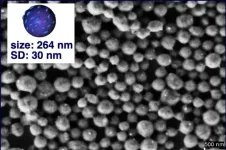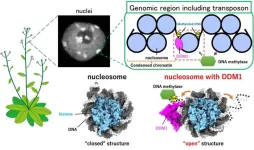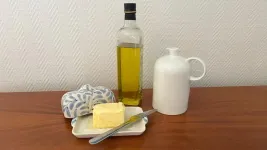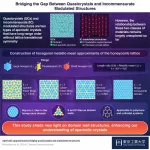(Press-News.org)
In 1887, chemist Sir Arthur Michael reported a nucleophilic addition reaction to the β-position of α,β- unsaturated carbonyl compounds. These reactions, named Michael addition reactions, have been extensively studied to date. In contrast, the anti-Michael addition reaction, referring to the nucleophilic addition reaction to the α-position, has been difficult to achieve. This is due to the higher electrophilicity of the β-position compared to the α-position. Previous attempts to overcome these difficulties have involved two main methods. The first is restricting the addition position via intramolecular reactions, while the second method involves introducing a strong-electron withdrawing group at the β-position. However, these methods are not ideal for synthesizing complex molecules via the anti-Michael reaction.
In a new study, a global team of researchers, led by Professor Takanori Matsuda and including Mr. Ryota Moro, both from the Department of Applied Chemistry at Tokyo University of Science, Japan, as well as including Assistant Professor Hirotsugu Suzuki from the Tenure-Track Program for Innovative Research at the University of Fukui, Japan, successfully achieved palladium-catalyzed anti-Michael addition reaction of acrylamides. This represents the first example of an anti-Michael-type addition reaction. “We found that the presence of a catalytic amount of palladium(II) trifluoroacetate Pd(TFA)2 is capable of facilitating the anti-Michael addition of indole to acrylamide with an aminoquinoline group as a directing group, producing the addition product in high-yield,” explains Prof. Matsuda.
Their study was made available online on May 14, 2024, and published in Volume 146, Issue 20 of the Journal of the American Chemical Society on May 22, 2024.
The team reasoned introducing a directing group into an α,β-unsaturated carbonyl compound could facilitate an anti-Michael type addition reaction by stabilizing the reaction intermediate. To test this, the researchers first used an acrylamide having an aminoquinoline-directing group, and a nucleophile, 1-methylindole, as model substrates to investigate the anti-Michael type addition reaction in the presence of the palladium catalyst. This reaction produced the desired product with a 90% yield. At a reaction scale of two millimoles, there was no yield loss, signifying the practicality of the reaction.
This reaction was also carried out with β-substituted cinnamamide derivatives and crotonamide derivatives with an alkyl group. Moreover, the reaction proceeded smoothly with a wide range of nucleophiles, including many indoles, heterocyclic compounds such as pyrroles and thiophenes, and electron-rich aromatic compounds. Additionally, the aminoquinoline-directing group used in this reaction can be converted to carboxylic acids and other amides, signifying the usefulness of the reaction.
The researchers also investigated the mechanism for this reaction through labeling experiments. They found that initially, the acrylamide coordinates to Pd(TFA)2 to form a five-membered ring palladacyle intermediate. The reaction then proceeds with the nucleophilic attack by indole on the intermediate, producing alkylpalladium species. Finally, an acid removes palladium and regenerates Pd(TFA)2, producing the desired α-substituted carbonyl compound.
Highlighting the potential applications of this study, Dr. Suzuki says, “The anti-Michael type addition is expected to become an ideal one-step reaction with 100% atomic efficiency for the synthesis of α-substituted carbonyl compounds, which are often used in pharmaceuticals. Our method will enable the widespread application of this reaction.”
Overall, this novel method can lead to efficient and sustainable synthesis of α-substituted carbonyl compounds and consequently pharmaceuticals, among other organic compounds.
***
Reference
DOI: https://doi.org/10.1021/jacs.4c00841
Authors: Hirotsugu Suzuki1, Ryota Moro2, and Takanori Matsuda2
Affiliations:
1Tenure-Track Program for Innovative Research, University of Fukui, Japan
2Department of Applied Chemistry, Tokyo University of Science, Japan
Funding information
This work was supported by JSPS KAKENHI Grant Numbers JP23K13743 and JP21K05061.
END
Seagull chicks raised on an “urban” diet still prefer seafood, new research shows.
University of Exeter scientists studied herring gull chicks that had been rescued after falling off roofs in towns across Cornwall, UK.
Raised in captivity (before being released), they were given either a “marine” diet consisting mainly of fish and mussels, or an “urban” diet containing mostly bread and cat food.
Every few days the gull chicks were presented with a choice of all four foods in different bowls, to test which they preferred – and all gulls strongly favoured fish.
“Our results suggest that, even when reared on an ‘urban’ ...
Superconductors are materials that can conduct electricity with zero resistance when cooled to a certain temperature, called the critical temperature. They have applications in many fields, including power grids, maglev trains, and medical imaging. High-temperature superconductors, which have critical temperatures higher than normal superconductors have significant potential for advancing these technologies. However, the mechanisms behind their superconductivity remain unclear.
Copper oxides or cuprates, a class of high-temperature superconductors, exhibit superconductivity ...
Scientists have taken a significant step towards the development of tailor-made chiral nanocarriers with controllable release properties. These nanocarriers, inspired by nature's helical molecules like DNA and proteins, hold immense potential for targeted drug delivery and other biomedical applications.
The study, led by Professors Emilio Quiñoá and Félix Freire at the Center for Research in Biological Chemistry and Molecular Materials (CiQUS), highlights the intricate relationship between the structure of helical polymers and their self-assembly into nanospheres. By carefully designing ...
The grants – each worth €150,000 – help researchers to bridge the gap between the discoveries stemming from their frontier research and the practical application of the findings, including early phases of their commercialisation.
Nanda Rea’s new project, called DeepSpacePULSE, aims to facilitate deep space exploration. Currently, to find their way, spacecraft and satellites use up a lot of energy exchanging vital navigation information with mission coordinators on Earth. Using ERC Proof of Concept funding, Prof. Nanda Rea ...
Native plants and non-native crops do not fare well in proximity to one another, attracting pests that spread diseases in both directions, according to two new UC Riverside studies.
“We have changed the landscape, and it’s created opportunities for pathogens to thrive,” said UCR entomologist Kerry Mauck, who co-authored the studies. “We have introduced pathogens that damage native plants, and on the other side of the coin we have endemic pathogens that mutate to infect ...
PULLMAN, Wash. – A small 3-ounce sensor capable of recording 2,400 data points of movement in just one second being tested and refined by researchers at Washington State University could be key in reducing the number of injuries to racehorses.
Led by Dr. Warwick Bayly in WSU’s College of Veterinary Medicine, researchers used the biometric sensors, developed by the company StrideSAFE, to track thoroughbreds as they raced and trained at some of the top racetracks in the country. Using collected data, the team was able to identify miniscule stride changes associated with increased risk ...
International joint research led by Akihisa Osakabe and Yoshimasa Takizawa of the University of Tokyo has clarified the molecular mechanisms in thale cresses (Arabidopsis thaliana) by which the DDM1 (Decreased in DNA Methylation 1) protein prevents the transcription of “jumping genes.” DDM1 makes “jumping genes” more accessible for transcription-suppressing chemical marks to be deposited. Because a variant of this protein exists in humans, the discovery provides insight into genetic conditions caused by such “jumping gene” mutations. The findings ...
Switching from a diet high in saturated animal fats to one rich in plant-based unsaturated fats affects the fat composition in the blood, which in turn influences long-term disease risk. A recent study published in Nature Medicine, conducted by a team of researchers from Chalmers University of Technology, Sweden, the German Institute of Human Nutrition, Germany and several other universities, shows that it is possible to accurately measure diet-related fat changes in the blood and directly link them to the risk of developing cardiovascular disease and type 2 diabetes.
“Our study confirms with even more certainty the health benefits of ...
Bees and other beneficial bugs are disproportionately harmed by air pollution compared to crop-destroying pests, a new study published in Nature Communications has found.
Researchers from the University of Reading analysed data from 120 scientific papers to understand how 40 types of insects in 19 countries respond to air pollutants like ozone, nitrogen oxides, sulfur dioxide and particulate matter. Pollinators - including bees and some moths and butterflies - experienced a 39% decline in foraging ...
For a long time, scientists associated crystal structures with an ordered arrangement of atoms in a repeating lattice-like pattern, believing it to be the most stable configuration. However, by the 1960s, advancements in crystallography revealed materials that did not fit the traditional model. These structures exhibit a non-periodic or non-repeating pattern and are called aperiodic crystals.
There are two types of aperiodic crystals: quasicrystals (QCs), which exhibit ordered but aperiodic arrangements, and incommensurately (IC) modulated structures, where a three-dimensional periodic lattice structure ...
